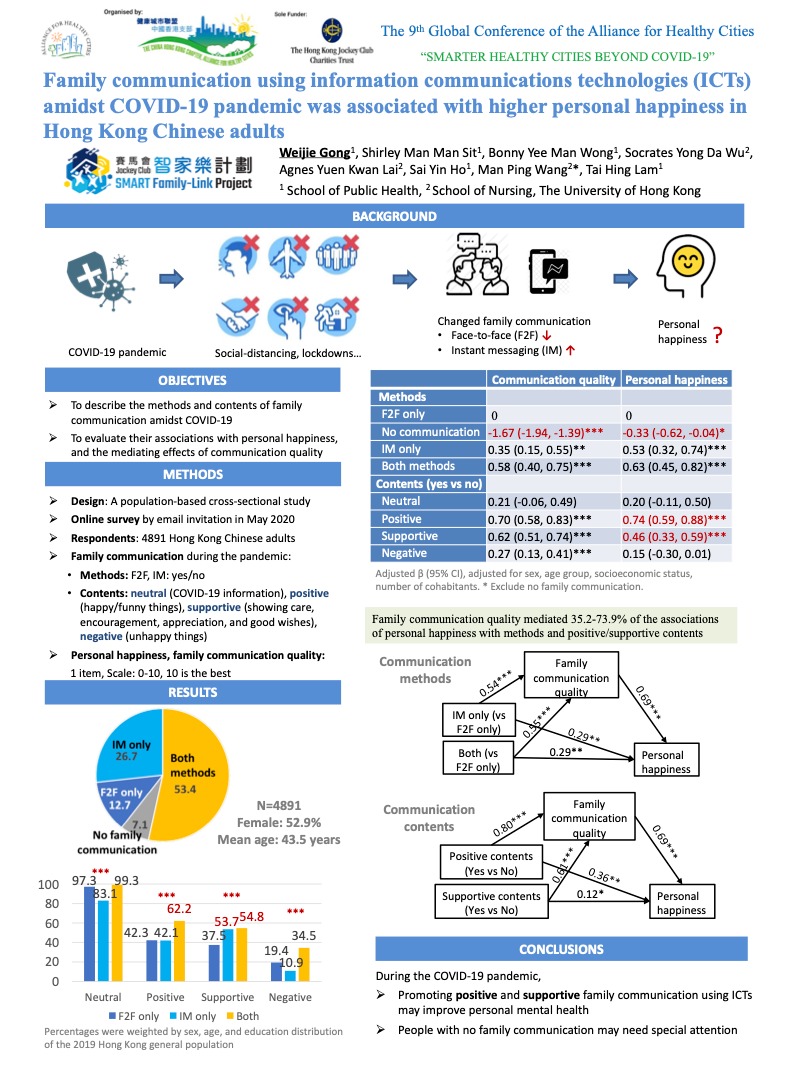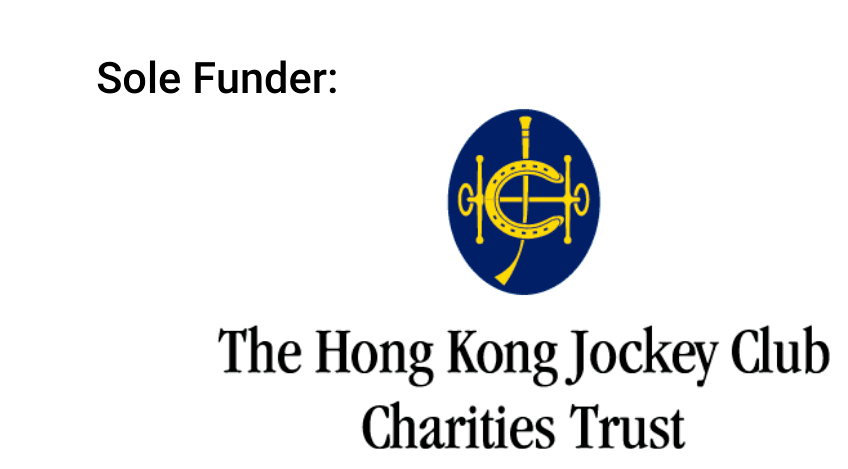Presenter 5: Family communication using information communications technologies (ICTs) amidst COVID-19 pandemic was associated with higher personal happiness in Hong Kong Chinese adults

Family communication using information communications technologies (ICTs) amidst COVID-19 pandemic was associated with higher personal happiness in Hong Kong Chinese adults
Background: Face-to-face family communication decreased amidst COVID-19 pandemic. Information communications technologies (ICTs) may help substitute face-to-face family communication on improving mental health.
Objectives: To examine the associations of methods and contents of family communication amidst the pandemic with personal happiness, and the mediating effects of communication quality.
Methods: Under the Hong Kong Jockey Club SMART Family-Link project, a cross-sectional online survey was conducted in May 2020 in Hong Kong Chinese adults to report (i) whether used face-to-face or instant messaging (IM) family communication when the pandemic was severe; (ii) communication contents including neutral (self/family-related things in daily life, COVID-19-related information, other health information, and others), positive (self/family-related and unrelated happy/funny things), supportive (showing care, encouragement, appreciation, and good wishes), and negative (self/family-related unhappy things); and (iii) communication quality and personal happiness (score 0-10, higher scores being favourable). Linear adjusted regression coefficients (aβs) were calculated to examine the associations of communication methods and contents (no communication excluded) with personal happiness, adjusting for sex, age, socioeconomic status, cohabitant number, and each other. Mediating effects of communication quality were also assessed. Prevalence estimates were weighted by sex, age, and education of general population.
Results: Of 4891 respondents (female 52.9%, mean age 43.5 years), 7.1% reported no family communication, 12.7% used face-to-face communication only, 26.7% used IM only, and 53.4% used both methods. Neutral (83.1-99.3%) contents were more frequent than positive (42.1-62.2%), supportive (37.5-54.8%), and negative (10.9-34.5%) ones. Using both methods shown higher communication quality than IM only, face-to-face only, and no communication (mean: 6.7 vs 4.5-6.6, all P≤0.02). Personal happiness was positively associated with using both methods (aβs: 0.42) and IM only (0.48) than face-to-face only, and with positive (0.74) and supportive (0.46) contents (all P≤0.001). Communication quality mediated 39.4-73.9% of these associations.
Conclusions: We have first reported that, amidst COVID-19 pandemic, personal happiness was positively associated with family communication using both methods and IM only than face-to-face only, and with positive and supportive contents, which were partially mediated by communication quality. Promoting positive and supportive family communication using ICTs amidst COVID-19 pandemic may improve personal mental health in Hong Kong adults.
Application: Increased ICT use may improve the efficiency of family services.


